You may have questions about how to choose boxing gloves for training and competition. But don’t worry, read our article to find the solution to all the questions.
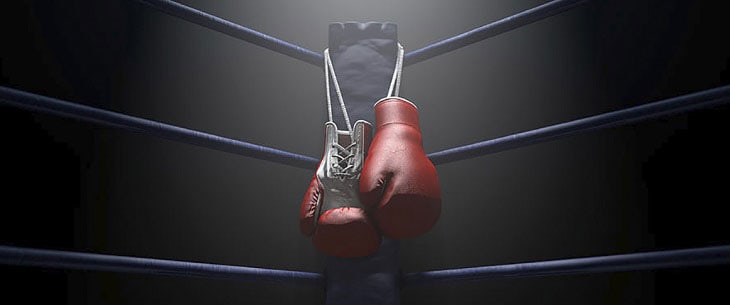
Table of Contents
Boxing gloves and mysterious OZ
Boxing gloves are one of the main attributes of equipment for boxing, kickboxing, Thai boxing and are also used during fitness training, MMA, hand-to-hand combat, and other types of martial-arts.
Gloves protect the kicking athlete’s hands (fist, arrow) and minimize severe injuries to his opponent.
If earlier there were no alternatives to black boxing gloves with lace-up and horsehair stuffing, now the choice of gloves has become a big problem for most athletes.
Boxing gloves can be amateur and professional, for competitions or training, of different designs in shape and color, made of other materials, differ in weight, and have stuffing of varying thickness and density, not to mention a variety of brands.
Yeah! My head is spinning, and I like everything. But you need to choose only one pair of gloves and preferably the best.
We will give you a tour of the unique world of boxing gloves and tell you in detail about everything.
From our detailed instructions, you will learn how gloves differ from each other, where they are used, and how they are produced.
Focusing on the necessary characteristics, you, as an expert, will choose the best boxing gloves for yourself.
Are you ready? Then go ahead!
To begin with, let’s decide what you need boxing gloves for to perform at competitions, for training sparring, or work on projectiles.
Please note that the size of boxing gloves is measured by weight in ounces (28.35 g); the letter combination “oz” is used for designation.
Combat Gloves
Professional Combat Boxing Gloves are gloves designed for professional fights and amateur competitions.
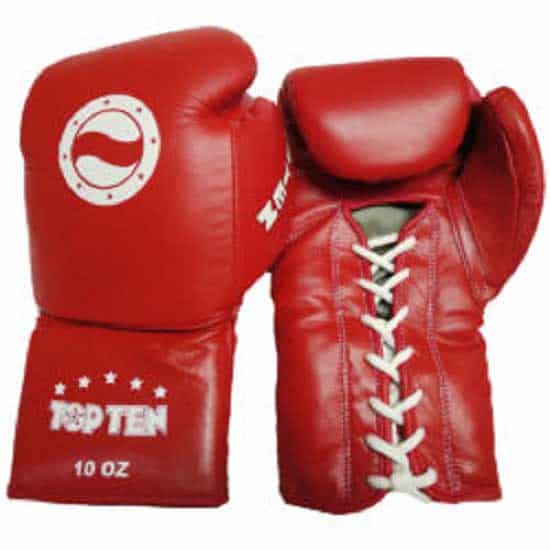
In professional boxing, 8-10 oz (oz) lace-up gloves are used for fighting.
The lowest layer of stuffing and the design of such gloves allow the first to take an anatomical shape and quickly squeeze the fist, which affects the convenience and knockout ability of the boxer.
In amateur boxing, competition gloves must be red or blue (matching the color of the angle), 10 or 12 oz (ounces), depending on the weight category. Boxers use 12 oz gloves over 70 kg.
And also have an AIBA (International Amateur Boxing Association) license for admission to international tournaments.
Such a license is applied to the gloves from the palm side in pad printing or a holographic sticker with a mandatory indication of the year.
The thumb is pressed parallel to the brush, sewn to the base, and less protected. The shape of the gloves and an additional roller in the area of the bend of the fingers do not allow you to clench your fist fully.
All this is designed to reduce the force of boxers’ blows and increase the safety of competitions. The cuff is fixed-with Velcro for convenience.
Best boxing gloves are used in kickboxing competitions in light contact, complete contact, full contact with a low kick, K-1. The color of the gloves is also selected to match the color of the athlete’s angle: red or blue (may have a dedicated strike zone in white).
The size (weight) is strictly 10 oz (ounces), regardless of the athlete’s weight category.
Kickboxing gloves must be licensed by WAKO (World Association of Kickboxing Organizations) to participate in international competitions.
Such a license is applied to the gloves from the palm side in pad printing with the WAKO logo. The gloves are fixed-with a Velcro cuff.
Boxing gloves for Thai boxing competitions (Muay Thai) also adhere to the prescribed rules but differ in design.
With a shortened cuff with Velcro, the fit of the hand is looser, and the fist is squeezed as much as-possible. This allows the Thai boxer to carry out grapples and hold receptions easily.
Training gloves
Boxing gloves TITLE PLATINUM Perilous Training boxing gloves are gloves designed for sparring and practicing punches in pairs.
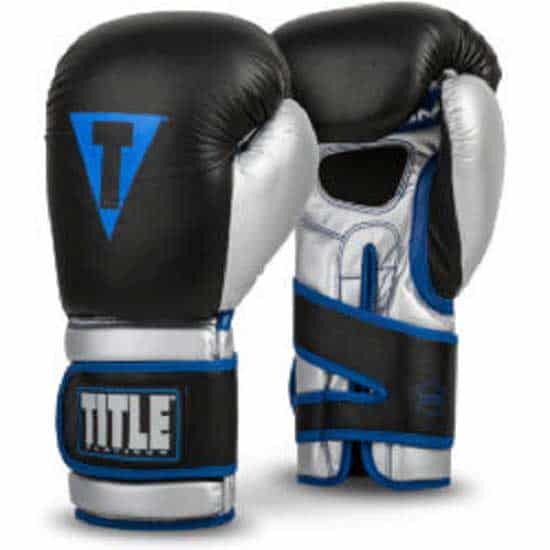
The choice of training gloves is simply enormous since they are not required to have a mandatory license from international organizations; they can have any shape, color, and design. The main thing in training gloves is safety, comfort, and durability.
Best boxing gloves should withstand 1-2 years of intense training loads. At the same time, the liner does not breakthrough, and the seams do not diverge.
For the comfort of the hands during a long workout, manufacturers add ventilation holes, mesh inserts in the palm area, and a moisture-absorbing inner lining.
There is a direct relationship; the greater the weight of the glove, the safer it is for the batter and the receiver. It should note that this relationship is conditional.
In different boxing clubs, other coaches may have their requirements in this regard. For example, in clubs with a high culture of boxing (read – where they are worried about the health of their clients), they will not allow sparring with gloves less than 16 ounces.
In others (and we also know these), the norm is 10-12 ounces for adult men. No one bothers except for those whose head is cracking after every workout.
As a rule, the greater the weight of the glove, the more space it has inside to accommodate the fist. But the weight and size of the hands are not always related quantities.
There are extensive people with relatively tiny fists, and vice versa. In such cases, the density of the landing of the hand in the glove can be adjusted by the degree of winding of the bandage. Boxing bandages are from 2.5 to 6 meters in length.
Accordingly, even on a small hand, you can comfortably put 18-ounce gloves simply by wrapping a longer bandage.
There are models of gloves focused on the fit of the hands for children and girls. To choose the size of boxing gloves for training, we suggest you use the following gradation according to-your weight and age:
4 oz – for children under six years old.
6 oz – children 6-8 years old.
8 oz – children from 8 to 10 years-old and girls.
10 oz – teenagers, women.
12 oz – if your weight is up to 70-kg.
14 oz – if your weight is from 70 to 80-kg.
16 oz – if your weight is from 80 to 90-kg.
18-20 oz – if your weight is over 90 kg.
Training gloves are fixed on the wrist with a Velcro-cuff. Due to the Velcro, they are quickly removed and put-on.
It is not recommended to use training gloves to work on boxing bags and other projectiles, as the liner breaks faster. And in the future, when using gloves in training sparring, you can cause serious injury to your partner.
Shell Gloves
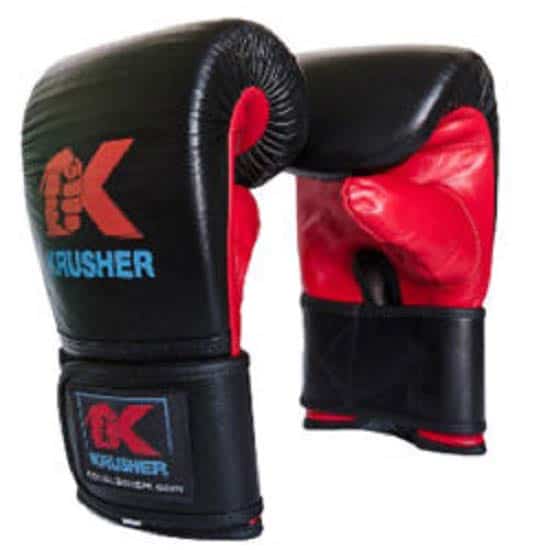
KRUSHER projectile gloves work on boxing bags, wall pillows, and other projectiles. There are two main types-of shell gloves:
Compact shell gloves “pancakes,” which are also called “bits” or “splints,” in such gloves, a small layer-of dense filler is used. They differ in design and are used to practice the technique of punches – they allow you to “feel” the contact, put a point.
Many people use them to strengthen their hands and fists, but you need to do it right. These gloves are not suitable for working on “stone” bags – the stuffing is too thin.
The weight of such gloves varies from 6 to 10 oz. You can choose the required size depending on the width of the fist, for example, S, L, M, XL.
Boxing projectile gloves of traditional shape with a reinforced impact surface. As a rule, they are available in a weight of 10-14 ounces.
But they may have additional consequences on the cuff, bringing the importance of the gloves to 20 ounces and above.
Often, old training gloves are used as projectile gloves – a reasonable approach; the main thing is that there is no punched stuffing in the gloves. Otherwise, they will not perform a protective function.
According to the purpose of the gloves, we decided and even chose the necessary characteristics. Now let’s dig deeper and find out how boxing gloves are made and what they consist of!
Production of boxing gloves
Boxing gloves belong to the leading protective equipment. Therefore, special attention is paid to their manufacture because poorly designed and manufactured equipment risks injury.
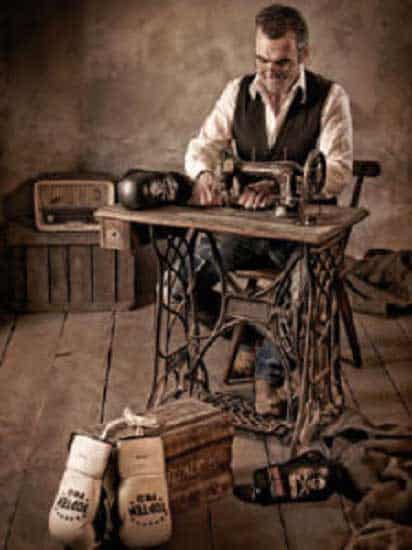
Boxing gloves are made by hand because it is impossible to automate fully since they consist of many small parts.
Initially, with the help of patterns and a press, leather or imitation leather is cut into several parts, from which it is necessary to assemble a complete structure. All pieces are sewn into one glove using strong Dacron threads.
Then the almost finished glove is turned inside out and stuffed with special fillers.
The fillers of suitable boxing gloves are three-layered. The first layer is located directly under the impact surface. Usually, it is low density; its task is to absorb the impact.
Next comes the second layer, medium density, whose task is to protect the bones and joints of the boxer. And the last inner layer of the highest density dampens the impact and protects the liner of the destructive effects of the fist’s knuckles.
After stuffing, the gloves are sewn with a lining made of synthetic material.
After it has been loaded and filed, it is sent to the test shop for inspection. There they selectively take several units from the batch and check them for the strength of the seams, the correctness of the shape, and safety for the athlete’s hands and joints.
The gloves are packed and sent to the warehouse or the store shelves only after checking the batch.
What kind of stuffing does boxing gloves have?
The stuffing for modern boxing gloves is made of foamed polymers, of which modern chemistry knows a wide variety.
Since their appearance 70 years ago, polymer foams have begun to gain popularity in almost all production areas due to their shock-absorbing, absorbent, thermoplastic, and many other valuable properties.
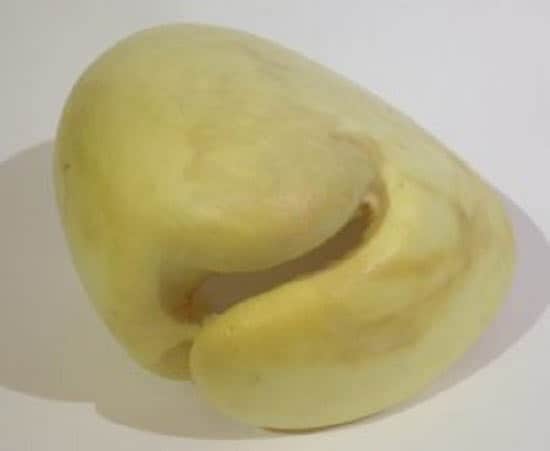
For boxing gloves, the essential characteristics of foams are “modulus of elasticity” and “modulus of tensile stress.” Instead, not these indicators themselves, but their values corresponding to the loads to which the glove is subjected.
The modulus of elasticity determines how evenly and how effectively the impact energy is extinguished. And the breaking voltage module determines whether the stuffing will crumble and break through overtime or not.
By the way, the loads on the boxing glove are such that it is impossible to use foams for a wide range of applications.
Under no circumstances will foam stand up against five hundred kilogram blows on a heavy bag, even from a good mattress.
Another important aspect of foam is the structure of cells. Foams are open-cell and closed-cell.
The former absorbs moisture; the latter does not. From a practical point of view, this means the following for us – foam with an open-cell structure located on the inner surface of the packing will absorb moisture and quickly become an excellent environment for stinky bacteria.
The types of stuffing can be divided into two categories: molded single-component stuffing and multilayer stuffing assembled from different foams.
Molded packing, also known as IMF, MM, MIM, etc. The essence of all these abbreviations is the description of the method of manufacturing the stuffing and not in the name of the polymer foam base.
IMF is Injection Mold Foam (injection foaming foam), MM – Machine Mold (machine molding), MIM – Machine Injection Mold. A mixture is poured into the mold, which foams and fills the volume.
Molded stuffing is the cheapest option available to the manufacturer.
A glove with padding has a characteristic spherical shape, provides a mediocre sense of contact, and makes it difficult to clench the fist. That’s probably why it is mainly used in AIBA gloves.
Multilayer stuffing – in its geometry and design, it gives a more effortless fist squeeze and a tighter grip, however, with reservations.
The more layers it uses, the more inflexible it becomes. As a rule, multilayer gaskets are thinner, which is why the requirements for shock-absorbing properties in them become sharper.
With the proper arrangement of layers of foam of different densities, it is possible to make gloves much safer, more convenient, and more durable. But the price of boxing gloves increases at the same time.
To keep the price at a minimum level, some unscrupulous manufacturers go-to marketing tricks, indicating in the characteristics a multilayer stuffing, where one of the layers may be ordinary fabric or foam rubber.
It would help if you understood that such a layer of filling would not positively affect gloves.
What material is used on the outside of boxing gloves?
Boxing gloves are sheathed with natural or artificial leather on the outside. As a rule, genuine leather gloves are more reliable and last longer.
Although now modern technologies allow you to create high-quality synthetic leather, not inferior to natural, and in some cases even superior. At the same time, the price of gloves will be lower.
In any case, the material should be sound to the touch, without visible flaws.
How to properly care for boxing gloves?
Ever new Glove Drying Liners (P00000666) unfortunately, glove manufacturers often do not provide customers with care information.
As a result, many athletes do not know how to take care of their equipment.
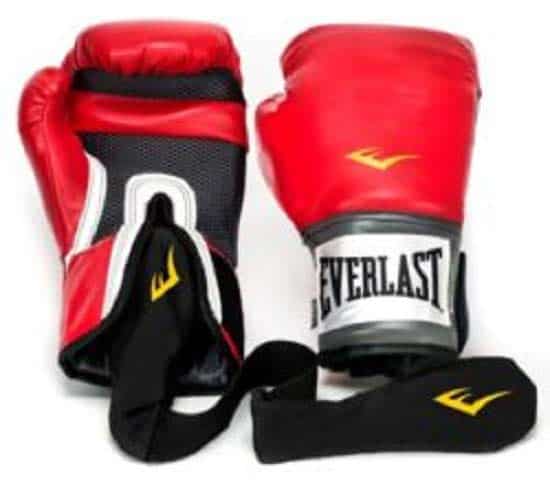
Some exceptionally gifted people try to wash boxing gloves, which leads to their damage.
Many do not take care of them at all, which leads to the gloves quickly beginning to smell unpleasant, and later the materials start to collapse. Without respect, even elite gloves can be ruined in less than a year.
In addition to an unpleasant smell, fungal bacteria dangerous to human skin can also form inside. For your boxing gloves to always remain clean and odorless, you need to follow the following simple rules:
Always use boxing bandages. In addition to protecting the hand and joints, boxing bandages absorb sweat very well. As a result, the glove gets wet less and, consequently, the time for drying it is significantly reduced. Just don’t forget to wash the bandages themselves at least once a week.
After training, you need to dry boxing gloves properly. It is not difficult to dry them; putting a crumpled newspaper into gloves after training is enough.
The newspaper will absorb all the excess moisture inside. There are also special dryers for boxing gloves. Or in extreme cases, after training, it is enough to put the gloves out of the bag, unbutton the Velcro, and put the palm up. The main thing is not to dry gloves on the battery!
If the outer surface is dirty, we recommend wiping it with a regular cloth soaked in soap solution. Do not rub your leather gloves with wax and other shoe care products.
How to buy the best boxing gloves
Black and gold boxing gloves ADIDAS HYBRID 300 (ADIH300) the design of the gloves should provide a tight and comfortable fist compression, as well as the correct position of the thumb – the thumb compartment should allow you to give it an anatomically correct position relative to the clenched fist without effort and discomfort.
Protection from the impact part of the glove is an additional plus. It protects the thumb from injury when applying inaccurate or sliding blows.
The stuffing in gloves should have shock-absorbing properties. At the same time, it should be elastic enough to provide a “sense of contact” when hitting and not be too rigid to minimize possible damage to the sparring partner.
Suitable boxing gloves effectively extinguish the impact energy, allowing you to strike safely and accurately, enjoying it. The main requirement for the stuffing is durability.
In no case should the padding lose its physical properties for at least one year of intensive training.
In boxing gloves, the wrist is fixed with Velcro or laces. Novice athletes can recommend Velcro gloves; lacing is an option for professional boxers.
There is also a wrist fixation in a boxing glove with an elastic band – it is better to abandon this option immediately due to poor reliability.
Thoughtful wrist locks use durable, high-quality Velcro. The Velcro should be wide enough for a tight wrist fit and provide a remarkable degree of grip for displacement.
Boxing gloves are better made of genuine leather, but you can also choose artificial leather to save money.
Famous brands of boxing gloves:
TOP TEN, ADIDAS, EVERLAST, TITLE, CLETO REYES, RINGSIDE, GREEN HILL, TWINS, HAYABUSA, FAIRTEX, ULTIMATUM BOXING, RDX, VENUM.
We hope you learn a lot about boxing gloves from our article “How to Choose Boxing Gloves“. So, we confirm, you have learned a lot about boxing gloves and are already ready to set off across the vast expanses of the Internet in search of your gloves. Let’s sum it up anyway!

I’m Abdur Rahim. I completed my Post Graduate from the Southeast University of Bangladesh. After then I start my professional with the Bangladesh Professional Boxing Society as an assistant manager of Admin. From my personal experience, I start writing about boxing accessories. I love this game, and that’s why want to share my experience. I think beginners to experts all boxers need to know about well accessories in boxing.

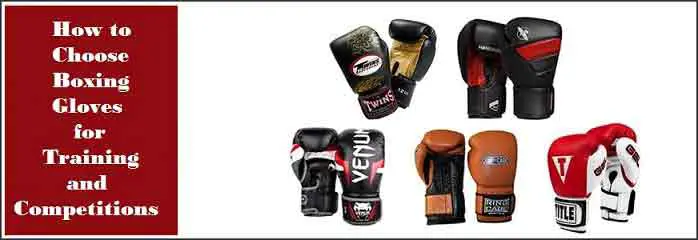
Pingback: Bag Gloves vs Sparring Gloves:WHAT MAKES THEM DIFFERENT?